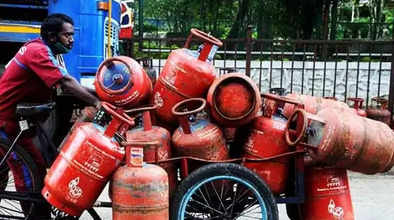How to find out how much gas is left in a cylinder? This simple trick will come in handy.

Gas Cylinder Using Tips: Gas cylinders are a daily necessity in almost every household, but sometimes we don't know how much gas is left in the cylinder. In such a situation, some simple home remedies can be easily found.
Gas Cylinder Using Tips: Nowadays, LPG gas cylinders are used in almost every household for cooking. It has become one of the most essential necessities in our kitchens. However, it often happens that the gas suddenly runs out while cooking, and we don't understand whether the cylinder is empty or there is a problem with the burner. This causes work to stop and causes problems.
If you know in advance how much gas is left in the cylinder, you can easily avoid this hassle. There are some simple home remedies that can help you find out how much gas is left without any machine. Let's find out which trick can be useful for everyone.
The water method is the easiest and most popular way to check the gas level in a cylinder. Simply fill a glass or mug with water. Pour this water slowly from the top to the bottom. Then, touch the cylinder from top to bottom with your hand. Where the cylinder feels cool, that's where the gas is present. The bottom will feel warmer.
Because there's no gas there. The gas-filled area is actually lower in temperature because LPG is in liquid form, and its evaporation creates cooling. This trick is the simplest and gives immediate results. If the coolest part is too low, then the cylinder is about to empty. In this situation, it's best to book a new cylinder in advance to avoid running out of gas.
Weight can also be used.
How much gas is left in your gas cylinder? If you want a more accurate estimate, use the weight method. Every LPG cylinder has its empty weight (tare weight) written on the top, such as 15.3 or 15.5 kg. If you have a weighing machine at home, place the cylinder on it and measure the total weight. Subtract the empty weight from the total weight. This will give you the actual weight of gas left in the cylinder. For example, if the total weight is 28.5 kg and the empty weight is 15.5 kg, then your cylinder has approximately 13 kg of gas left.

